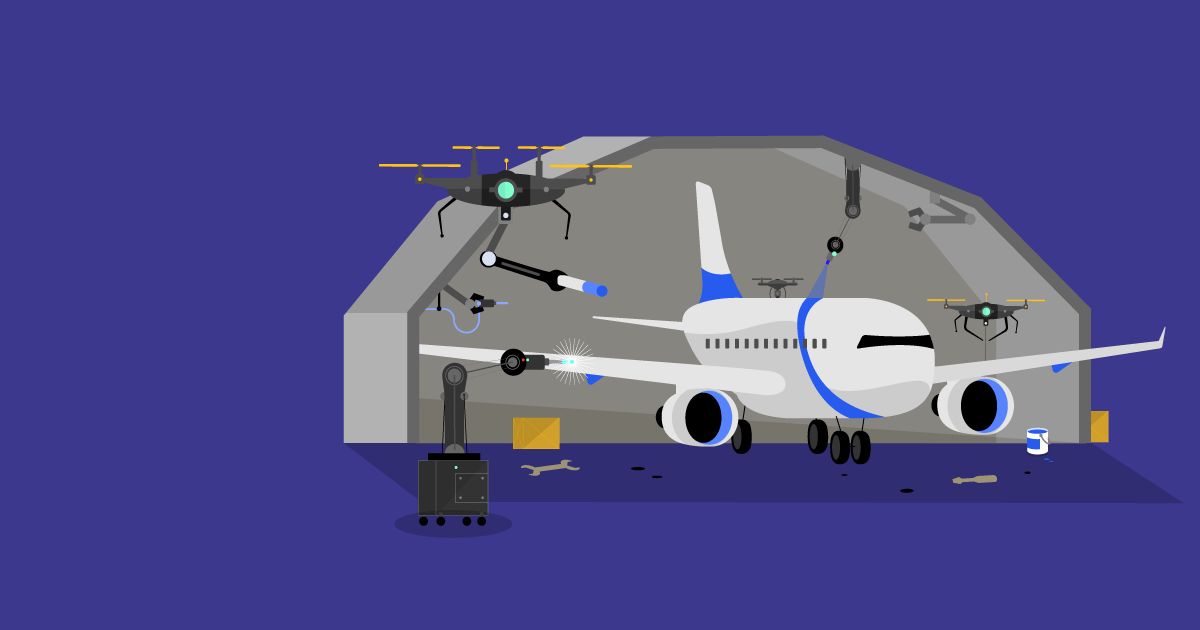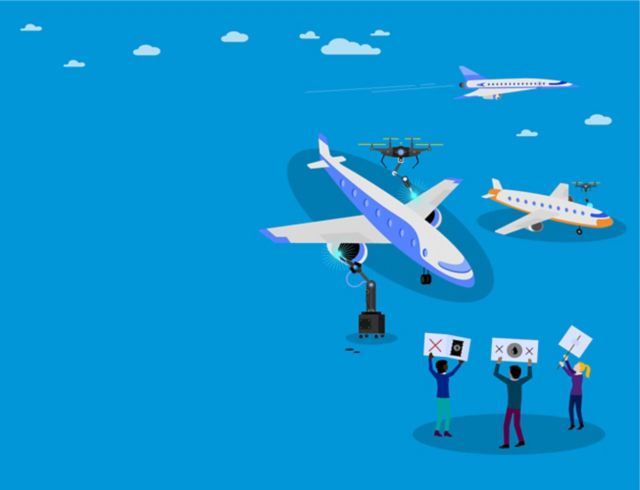Major disruption is promised by a range of powerful new technologies and public pressure. Players that turn these trends to their advantage have the opportunity to reshape the industry. In Aviation 2030, we survey the landscape of the aviation industry, looking forward to the next decade and beyond.
What are the trends likely to impact the key players of the aviation sector? In this report, we outline three key disruptive forces that the sector must grapple with.

Alternative sources of energy
Shifting consumer sentiment and increased pressure from governments have placed a spotlight on the aviation sector as a major greenhouse gas (GHG) emitter. The aviation industry has set a target of cutting GHG emissions in half by 2050 based on 2005 levels. What are the promising technologies and how could they impact key industry players?

Maintenance robotics
How will the fourth industrial revolution impact the aviation sector? Currently Aircraft maintenance accounts for roughly 20% of a plane's operating cost. Industry leaders and new hopefuls are placing big bets on the intelligent automation of maintenance fueled by millions of terabytes of data generated by NextGen aircraft. How could this increased digitalization shift the landscape for established players?

Return of supersonic
The challenges that grounded commercial supersonic flight are still present, but the lure of faster travel remains as strong as ever. Is a niche emerging that will enable supersonic to once again become viable?
For a more in depth look at these topics, as well as an examination of what each trend could mean to key sector players, download the full Aviation 2030 report.
Christopher Brown
Director, Global Strategy Group
KPMG in Ireland
Mr. Jono Anderson
Principal, Strategy & Innovation
KPMG in the U.S.
Kieran O'Brien
Partner, Aviation Advisory
KPMG in Ireland
Connect with us
- Find office locations kpmg.findOfficeLocations
- kpmg.emailUs
- Social media @ KPMG kpmg.socialMedia



